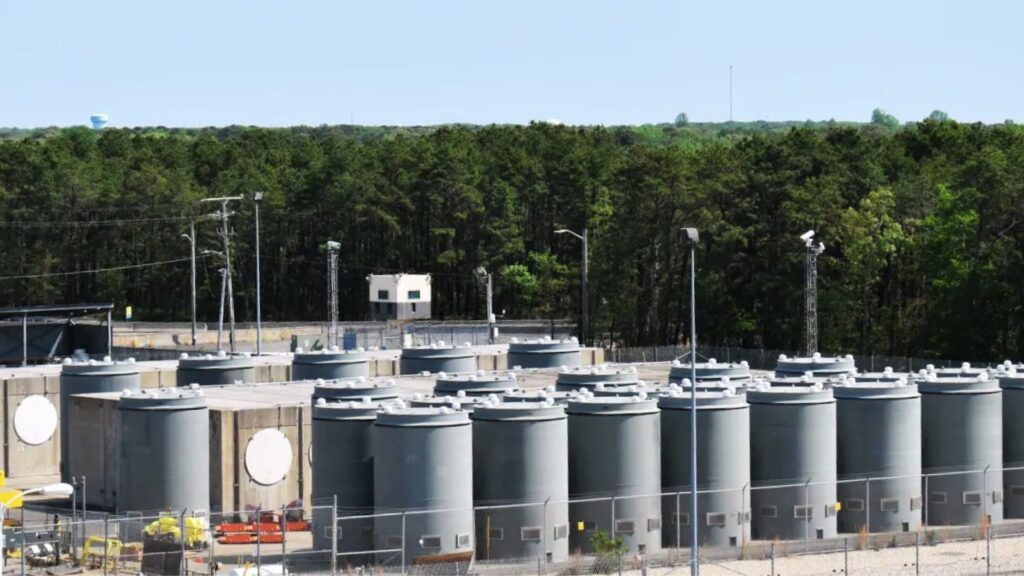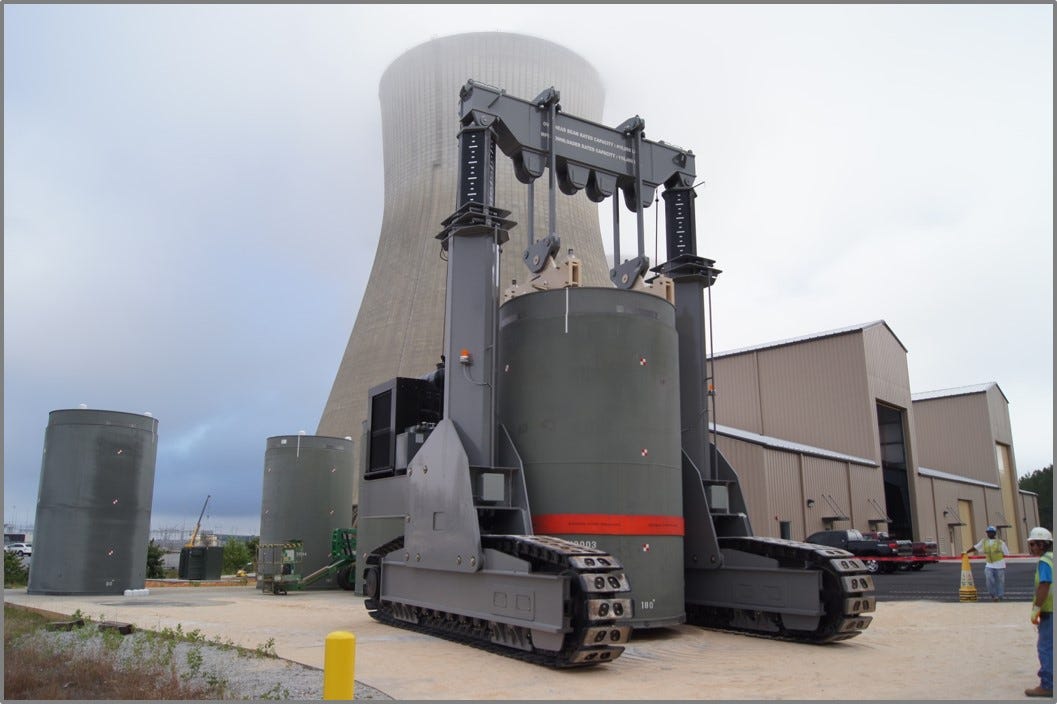Author: THE KERNEL & Kiersten Sundell

When nuclear fuel is done pumping out clean power for 5 straight years in a reactor, it chills in a cooling pool for another 5 years before being moved to dry cask storage at a spent fuel pad. One question we get asked a lot is: are those safe from…attacks? Would hosting one put our community on the map for terrorism? Could someone just walk on in and steal nuclear waste and then use it to build a bomb? What if they shot at it? Or broke into it with a hammer?
Rest assured, none of that is functionally possible. Nuclear waste casks are some of the most impenetrable structures on Earth. They’re made of layers of steel and concrete that are multiple feet thick, and feature at least two sealed lids. They’re bullet-proof and missile-proof, explosion proof and fire proof, and yes, they can even withstand hammers. They also weigh about 185 tons, or 90 elephants. There’s absolutely no way someone could just walk away with one, and there’s only one type of machine in the world that can move them.

It’s the size of a battle tank, and it moves about 1 mile per hour because of how heavy the load is. Unless an alleged attacker had one of these bad boys in hiding, as well as the ability to drive it out of a maximum security facility and down the highway without notice, those casks are staying put.
The facility grounds themselves are sealed shut like a prison – nobody is getting in or out unless they’re authorized to do so. Protective measures include things like barbed wire fences, radiation detection portals, surveillance cameras, X-ray scanners for detecting hidden weapons or explosives, and armed security.
And all of this isn’t because there’s a realistic threat of something bad happening, or because dangerous attacks have happened in the past. These measures are to make people feel safe, and keep them safe beyond a shadow of a doubt. The careful management of spent nuclear energy allows communities to confidently host these facilities without fear of terrorism or any credible threat to public safety.


